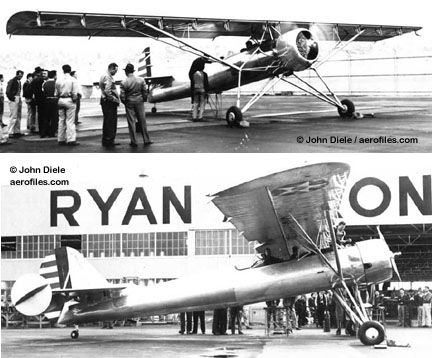Das een makkie, die hoef je toch niet eens op te zoeken? Das Nederlands glorie:
The Schelde S-21
The Schelde firm was relatively new in aircraft building. It was in 1935 this leading shipbuilding company took over the Pander works in Vlissingen, which had recently went bankrupt. The well known constructor Slot remained, and started work on a straightforward sports aircraft, the S-12. In 1938 the Schelde design team started work on a more daring project, or actually two. Work commenced on the S-20 and S-21 projects. Both aircraft were to feature a twinboom lay-out with a pusher engine situated behind the crew. The S-20 was a trainer aircraft, while the S-21 was a heavily armed fighter project. It was an all metal design with a gullwing, and a streamlined cockpit fuselage, which offered the pilot excellent view, also to below and back. Directly behind the pilot sat the engine, which gave the pilot some level of protection in case of a dogfight. Also, an armoured bulkhead devided the pilot with the engine. The armament, which consisted of 4 7,9 mm machineguns and one 23 mm canon, was fitted within hands reach. If needed, the pilot could even aim the canon by hand.
Prospects for the aircraft were excellent. The powersource, a Daimler-Benz DB 600Ga 12 cylinder inverted vee engine of 1050 hp, could give the aircraft a topspeed of 590 km/hr, and a continuous cruise speed of 520 km/hr. Of course, the engine lay-out meant that cooling had to be achieved differently. The radiator was placed under the pilot compartment, and a large air intake dominated the design of the nose. The intake was divided in two, this was to house the wheel compartment.
Final assembly of the prototype was still under way when the Germans invaded Holland in May 1940. The prototype was captured and finally destroyed when undergoing stress baring tests. The destruction of this aircraft meant the demise of a very promising aircraft, which could well have been a serious challenger to both the Spitfire and the Me-109.
Technical data (calculated)
Crew 1
Wingspan: 9.00 m
Length: 7,43 m
Height: 2,60 m
Weight (empty): 1700 kg
Weight (loaded): 2500 kg
Ceiling: 10000 m
Top speed: 590 km/h
Cruise speed: 520 km/hr
Tactical range: 950 km
Engine: Daimler-Benz DB 600Ga of 1050 HP
Armament: 4 x 7.9 mm FN-Browning guns, 1 23 mm Madsen canon
Volgende :

The Schelde S-21
The Schelde firm was relatively new in aircraft building. It was in 1935 this leading shipbuilding company took over the Pander works in Vlissingen, which had recently went bankrupt. The well known constructor Slot remained, and started work on a straightforward sports aircraft, the S-12. In 1938 the Schelde design team started work on a more daring project, or actually two. Work commenced on the S-20 and S-21 projects. Both aircraft were to feature a twinboom lay-out with a pusher engine situated behind the crew. The S-20 was a trainer aircraft, while the S-21 was a heavily armed fighter project. It was an all metal design with a gullwing, and a streamlined cockpit fuselage, which offered the pilot excellent view, also to below and back. Directly behind the pilot sat the engine, which gave the pilot some level of protection in case of a dogfight. Also, an armoured bulkhead devided the pilot with the engine. The armament, which consisted of 4 7,9 mm machineguns and one 23 mm canon, was fitted within hands reach. If needed, the pilot could even aim the canon by hand.
Prospects for the aircraft were excellent. The powersource, a Daimler-Benz DB 600Ga 12 cylinder inverted vee engine of 1050 hp, could give the aircraft a topspeed of 590 km/hr, and a continuous cruise speed of 520 km/hr. Of course, the engine lay-out meant that cooling had to be achieved differently. The radiator was placed under the pilot compartment, and a large air intake dominated the design of the nose. The intake was divided in two, this was to house the wheel compartment.
Final assembly of the prototype was still under way when the Germans invaded Holland in May 1940. The prototype was captured and finally destroyed when undergoing stress baring tests. The destruction of this aircraft meant the demise of a very promising aircraft, which could well have been a serious challenger to both the Spitfire and the Me-109.
Technical data (calculated)
Crew 1
Wingspan: 9.00 m
Length: 7,43 m
Height: 2,60 m
Weight (empty): 1700 kg
Weight (loaded): 2500 kg
Ceiling: 10000 m
Top speed: 590 km/h
Cruise speed: 520 km/hr
Tactical range: 950 km
Engine: Daimler-Benz DB 600Ga of 1050 HP
Armament: 4 x 7.9 mm FN-Browning guns, 1 23 mm Madsen canon
Volgende :









